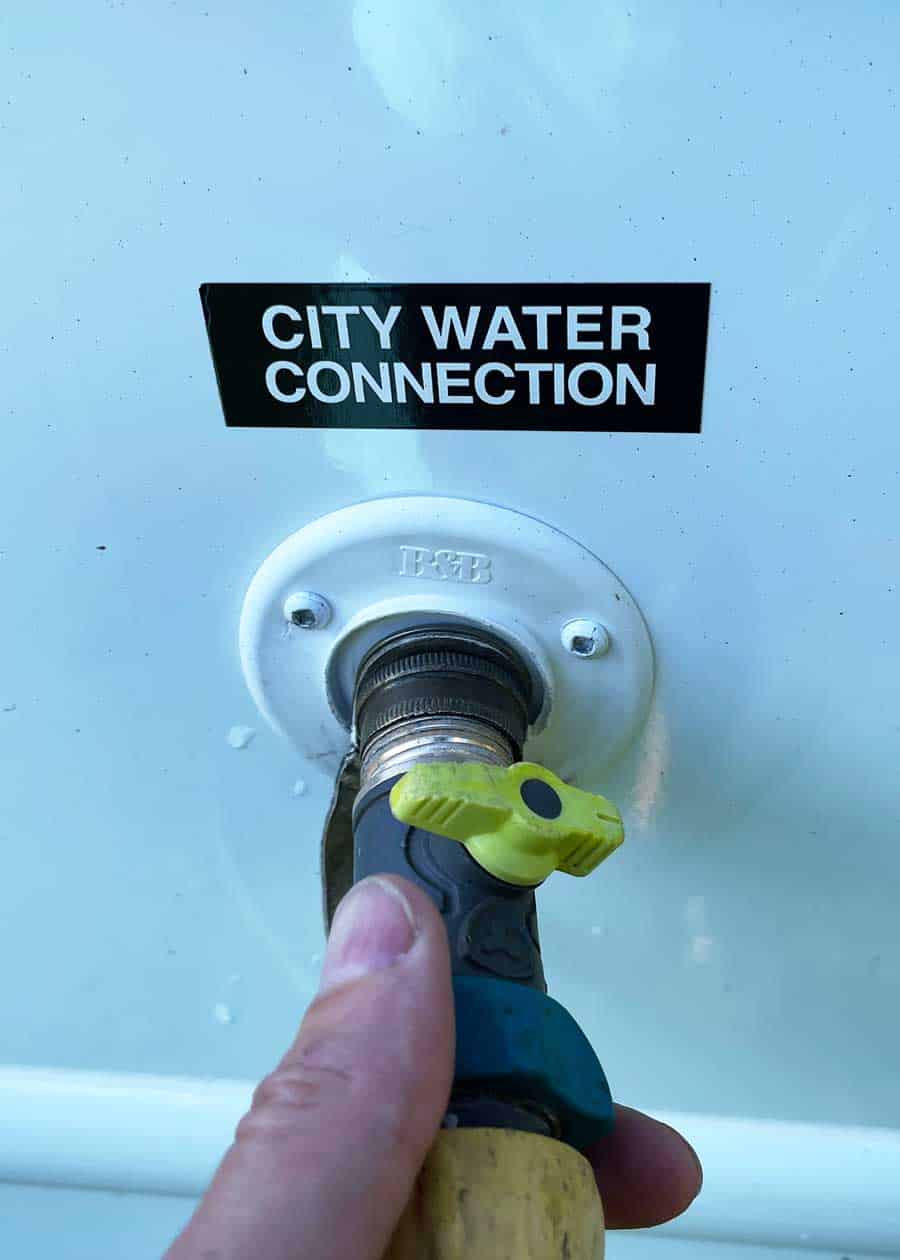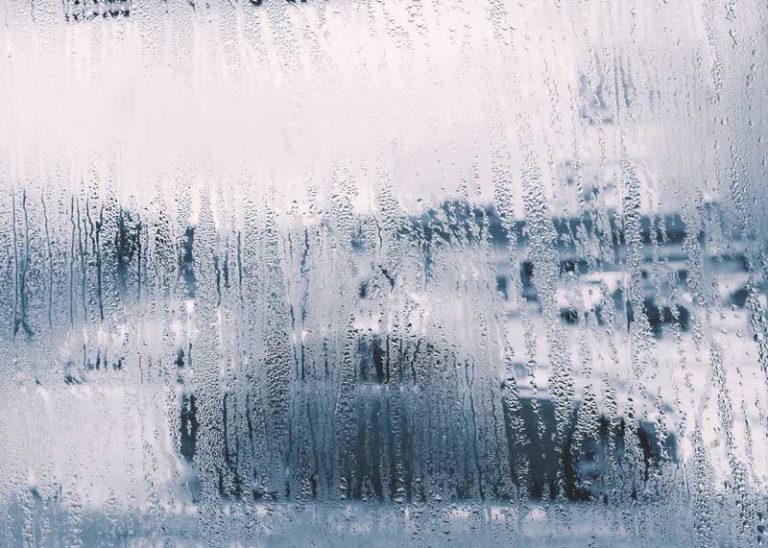How to Sanitize RV Fresh Water Tank: 8 Simple Steps (Tips & Supplies)
Sanitizing your RV water tank is important to protect you and your family from dangerous bacteria, germs, and parasites. These risks include E. coli, Giardia, and Cryptosporidium. And they can cause diarrhea, nausea, vomiting, and more severe conditions such as gastrointestinal distress and kidney failure. Here’s how to sanitize RV fresh water tank in 8 simple steps.
Sanitizing your RV water tank is easy. To begin, turn off your water heater. Then disconnect hoses, drain all water, and clean the outside of the tank and all connections. Next, add tank sanitizer and let it set. Then drain and rinse. Your tank is now clean and ready for fresh drinking water.

Here are 8 simple steps on how to sanitize RV fresh water tank. This is an important step when dewinterizing your camper.
How to Sanitize RV Fresh Water Tank
If you fail to clean your freshwater tank regularly, you risk growing algae and bacteria inside it.
Contamination is a particularly recurrent problem for larger RVs that fill up with fresh water for extended periods. Or for RVs that fill their tank and let it sit for an extended period.
You should also check the filters and change them regularly. Your RV fresh water system is responsible for keeping your drinking water clean.
If water filters go unchanged, they clog with contaminants that might alter your water’s safety and quality.

Step 1: Gather Supplies
If you want to sanitize your fresh water system, you’ll need some form of RV water tank sanitizing agent and a few things from the hardware store.
Items necessary for how to clean fresh water tank in RV:
- Water Hose, to fill the water tank. Make sure to use a drinking water-safe hose, like this one by Flexzilla.
- Bucket or bucket-like container, for mixing solutions
- Fresh water source, to fill the water tank
- Rubber gloves, to avoid having chemicals irritate your skin. And keep your hands clean when draining the water tank.
- Unscented bleach or another sanitizing cleaner. Amounts may vary on usage, more on this below.
- Sponge or rag, to thoroughly clean tank surfaces and connectors
Step 2: Turn Off Water Heater
Turn off power to your water heater. Don’t forget to turn off the propane and electrical connections to the heater.
Also, turn off your fresh water supply line coming into the tank (you should see two shutoff valves).
Further, turning your water supply to all fixtures off is important before cleaning your RV fresh water tank. You should also switch off any water supply to the RV tank before you begin cleaning your tank. This will avoid damaging your water heater.
Should I leave my RV water heater on? Here are 7 things to know.
Step 3: Disconnect Hoses
Disconnect any hoses that link to your RV’s fresh water tank and set them aside for cleaning later. Remove and store them somewhere safe with some plastic wrap over the ends so they don’t become dirty during this process.
Disconnecting the hoses will help prevent cross-contamination during cleaning efforts later in this process. You will also get better access inside each area when cleaning begins.

Step 4: Drain All the Water: Fresh and Grey Water Tanks
Drain Fresh Water: You need to drain the fresh water tank entirely before proceeding. Draining out the water is essential because if you don’t do this, your RV’s plumbing system may not get properly sanitized.
Why drain the fresh water tank? When cleaning the fresh water tank, you’ll first add the sanitizer (likely bleach) and then add more water to properly mix it. If there is too much volume in the tank, the bleach won’t mix as well.
How to drain the fresh water tank: You can drain the fresh water tank by running the tap and shower until empty. Or you can locate the fresh water tank drain (under the RV).
Drain Grey Water: This is the tank that will hold your bleach solution as you run it through the plumbing lines. You’ll want to begin with an empty tank.

Step 5: Add Bleach to Fresh Water Tank (Then Fill With Water)
Now it’s time to add the sanitizing solution. Use chlorine bleach or another freshwater sanitizer (like Camco TastePURE) to disinfect your water.
Chlorine Bleach Ratio: Getting the bleach ratio correct is important. Too much can harm the gaskets and plumbing. Adding too little and it won’t properly sanitize.
You’ll need about a 1/4 cup of bleach for every 16 gallons of water your fresh water tank holds. Another helpful ratio for your calculator is to use one ounce of bleach for every eight gallons of freshwater.
Camping World
Here’s a helpful disinfection chart by the Nevada Division of Environmental Protection.
Note: Never add straight bleach to your water system. It can harm your fittings and gaskets. Instead, add the measured amount of bleach to a jug, add some water and then add to the system.
- Fill The Tank With Fresh Water: With the bleach added, now it’s time to fill your fresh water tank to capacity. This will bring the bleach solution into all corners of your plumbing system.
- Briefly Run Pipes: With the tank full, it’s time to run all taps and showers until you can smell the solution. This will bring the bleach solution into the pipes for sanitizing.
While running the water, be careful to avoid splashing yourself or your clothes with the solution.

Step 6: Allow Bleach Solution to Sit (Slosh it a Little)
With your fresh water system filled with the bleach solution, it’s time to let it sit. The longer it sits, the more effective it will be at killing the bacteria.
How long should the bleach sit in the freshwater tank? Experts vary in their recommendations, but they range from 8 to 12 hours. The easiest thing to do is add the bleach in the evening and by morning it should be good to drain and rinse.
Take it for a drive: To ensure that the sanitizing solution reaches all parts of the tank and plumbing system, consider going for a drive. Even a 15-minute drive will slosh the solution into all parts.
Doing a slosh drive immediately after adding the solution will give it time to properly sanitize all surfaces.
Step 7: Drain Your Fresh Water Tank and Rinse
After allowing the bleach to sit for 8 to 12 hours, it’s time to drain the freshwater tank.
- Drain Bleach Solution: You can do this by running the tap and shower water into the grey water tank. And you can also open the fresh water drain valve.
- Flush the System with Fresh Water: With your fresh water tank empty, fill it with potable (drinkable) water from a hose or faucet. And run that full tank of water through your taps. You
Don’t forget to run all of the faucets again. You’ll want to get all the bleach out of the plumbing system before you refill the tank with potable water for use.
How many times will you need to flush the RV tank? Probably one full tank of fresh water should be enough to properly flush and rinse. But if you still smell bleach, you’ll want to repeat the flushing process until that smell disappears.
Because you’ll be running most of the water through the taps, you’ll need to drain your grey water tank. This is what the connection looks like.

With your fresh water system fully flushed and sanitized, it’s time to put everything back to normal.
- Refill your fresh water tank.
- Turn your hot water heater back on.
- Turn on your water filter and any other water-using appliances.
Step 8: Clean the Outside of Your Water Tank
Another step in RV sanitation is to clean the fittings and outside of your fresh water tank.
Cleaning the exterior connection will help prevent debris and other contaminants from getting inside the fresh water tank. If it is quite dirty, you should replace the connector cover.
Here are 5 ways to refill your fresh water tank during camping.
How to Maintain a Clean RV Fresh Water Tank
Maintaining a clean RV fresh water tank is important for health reasons. There are several ways to make sure that the water in your tank stays clean and healthy.
Here are some tips for maintaining your RV freshwater tank:
Sanitize Your RV Water Tank Regularly
How often should you clean your RV fresh water tank? A minimum of twice per season.
- Once when you take it out of storage from the winter. This is especially important if you put antifreeze in your plumbing lines.
- And a second time about mid-season.
Of course, you should always sanitize your tank if you notice any unusual taste or smell. Or if you accidentally fill your tank with non-potable water.
Should you clean your fresh water tank when winterizing your RV? It probably isn’t necessary. And you’ll be cleaning it again when you bring it out next season. Here’s how to winterize your RV.

Use a Water Softener
Using a water softener can help reduce or eliminate calcium, magnesium, and other mineral buildups on faucets and pipes, preventing corrosion and reducing rust stains.
Calcium deposits in your freshwater system cause clogs which prevent water from flowing freely through your lines.
It’s best to install this device before any problems arise so that they don’t get out of control later down the road when it’s time for maintenance work (such as replacing filters).
Use Filters/Purifiers/Sterilizers
Apart from filters, you might want to invest in filters and purifiers. These devices will remove contaminants like chlorine from tap water before the water reaches its destination inside your vehicle’s utilities.
Filters and sterilizers are a great strategy to maintain good, clean water. And avoid any unwanted odors and lifeforms in your water.
Regularly Change Filters
The best way to ensure that water filters do not get plugged up quickly is by being diligent about keeping them clean!
A dirty filter will restrict flow, leading to pressure drops, resulting in performance loss and potentially damaging effects on other components such as pumps or valves.

Keep Learning: See all our RV Living guides.
Get Started
So here is how to sanitize RV fresh water tank: start by turning off the water to the tank and draining out as much water as possible. Next, put in a bleach solution and let it soak for hours. The next day, drain it out and flush it out with water. Repeat this process at least once a month to clean your water tank.
How did it go for you? Have a tip or personal experience to share? Please share them in the comments below!






